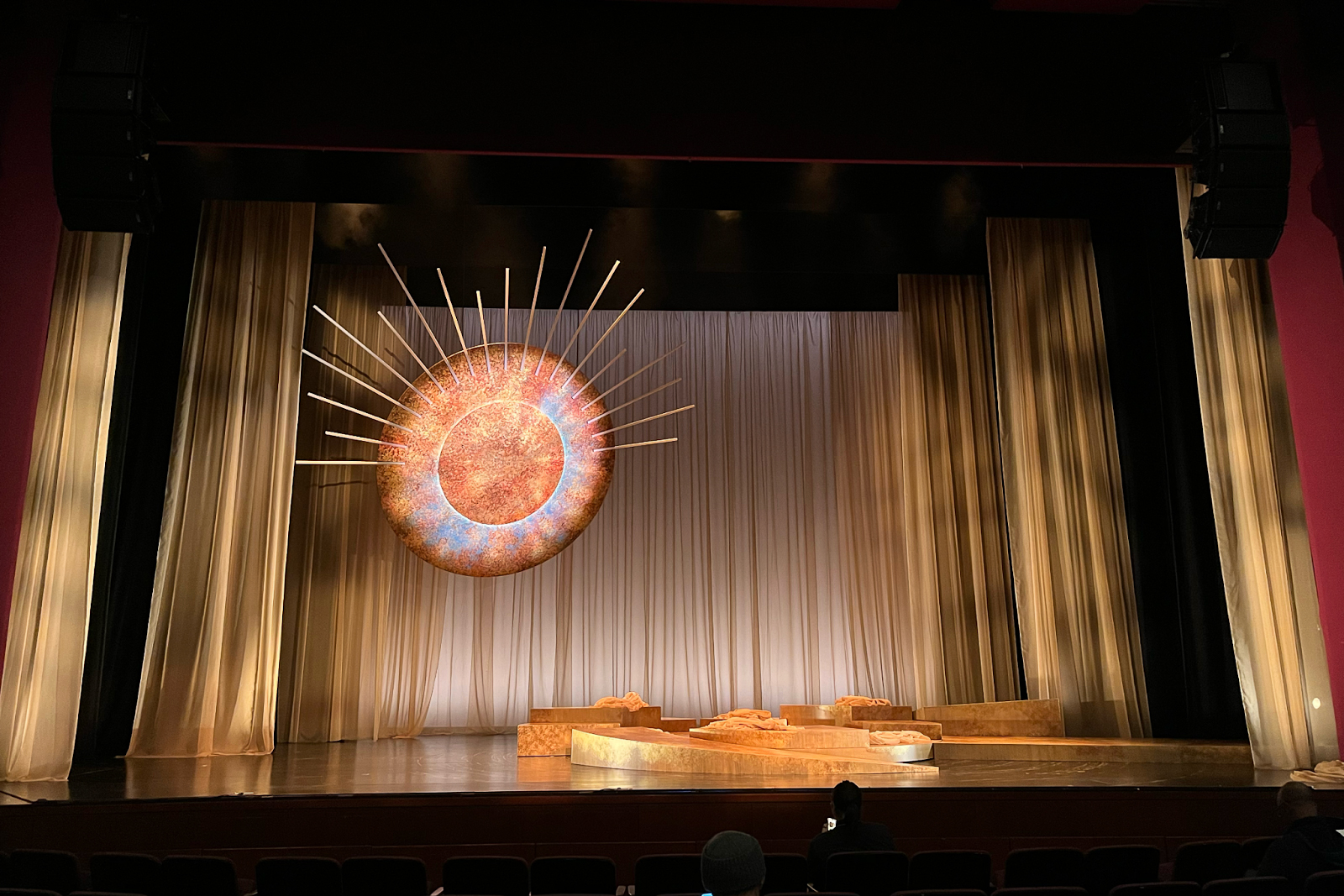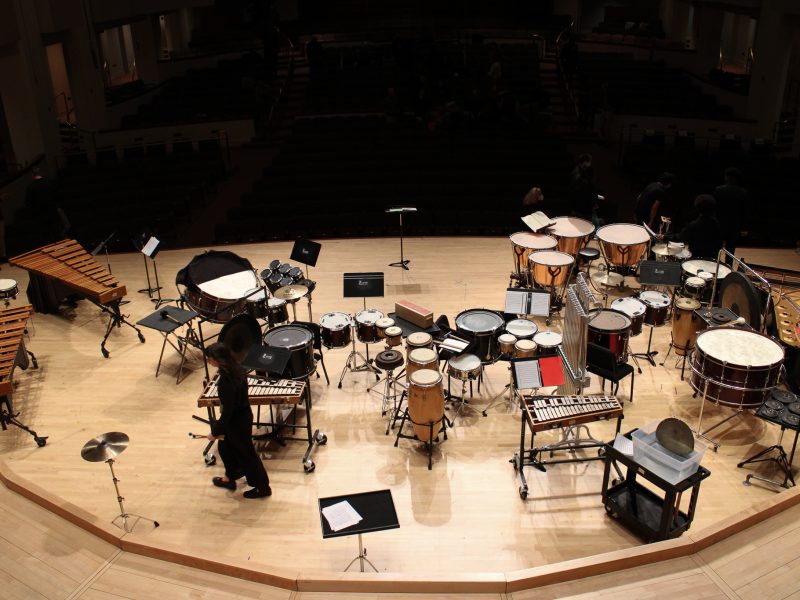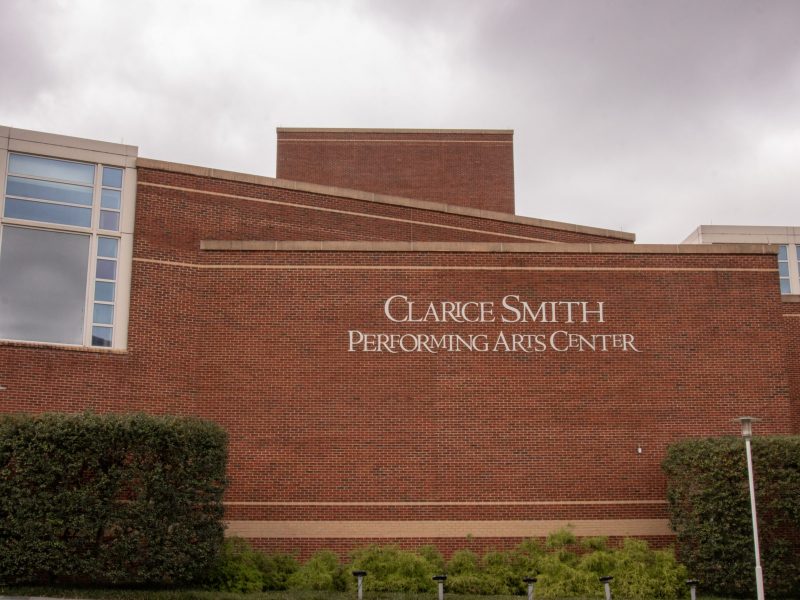Content Warning: This article contains mention of sexual assault and rape.
As the Kay Theatre lights dimmed and the faint sounds of Willie Colón and Beyoncé poured over speakers, an unconventional pre-show announcement played. One of the cast asked the audience to join them in a “sister space” and share their energy, focus and care.
On Friday night, the theater, dance and performance studies school hosted its opening night performance of Ntozake Shange’s for colored girls who have considered suicide / when the rainbow is enuf at The Clarice Smith Performing Arts Center.
The show, known for its unique combination of movement and verse termed a “choreopoem,” has been performed in theaters for nearly 50 years.
“We just opened it up so that theater students could maybe get a feel for what it’s like to be in their bodies through dance, so dance students could get an idea of what it’s like to work with text,” said co-director Fatima Quander. “Just having that session, even before the auditions, was really great to kind of take down some of the barriers that the students just put on themselves.”
[Quen Blackwell brings decades of the internet to life at SEE’s spring lecture]
The result is a unique and jarring blend of joy and pain — recognizing and placing the audience into the experience of Black womanhood in America. Between switching from warm, colored lighting to a harsh white spotlight or cutting off music with the snap of a finger, the production moved from a dance party to a hospital room with sobering clarity.
The show’s centerpiece includes a massive sun, changing with each poem to represent the different members of the cast, each one dressed as a color of the rainbow.
The costumes also incorporated a variety of fabrics and silhouettes, ranging from an angular red suit jacket to flowing olive palazzo pants. Co-director Ama Law said fabric became a crucial and unique part of their production.
“We use fabric to tell the story, whether the performers are using it to pretend it is a costume piece, or a prop, or even like a baby,” Law said. “Our only tangible prop is a plant. And aside from that, the performers express everything they need through how they manipulate the fabric.”
The show explores themes of sexual assault, rape, abortion and motherhood with nothing more than the strength of its actors and impactful staging. The production uses a slowly rotating setpiece with varied levels of platforms in order to portray each character on a different plane.
“It doesn’t shy away from, you know, really difficult experiences and trauma that, unfortunately, is very normal in a Black American woman’s experience,” Quander said.
Junior psychology and theatre major Nina Omatsola, who performed as The Lady in Purple, said that routine rituals went a long way toward ensuring the cast was able to remove themselves from the intense headspace of the show after rehearsals.
“We would, like, just get in a circle and stand with each other and stand with each other’s space,” she said. “We would do the scene, we would like, take a breath, to just breathe out of it, so that we don’t take that hurt and pain when we leave.”
[The Clarice’s ‘Cuckoo’ uses iconic rice cookers to tell South Korea’s story]
At its heart, For Colored Girls is a celebration of Black womanhood and the joyful community it cultivates. The uniquely interactive aspects of the production invited audience members to snap, clap along or shout out their support and emotion. One scene even sees the cast take to the aisles to start a dance party with audience members.
This profound joy is the most important part of the production’s message, Quander said.
“We wanted to be intentional with the joyous moments so that we could have those ups and downs for ourselves, so that we could see how fun and funny and, you know, playful and innocent and just exciting Black women are, even when they’re grown,” Quander said.



